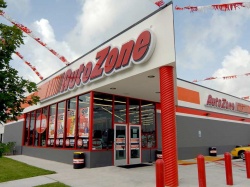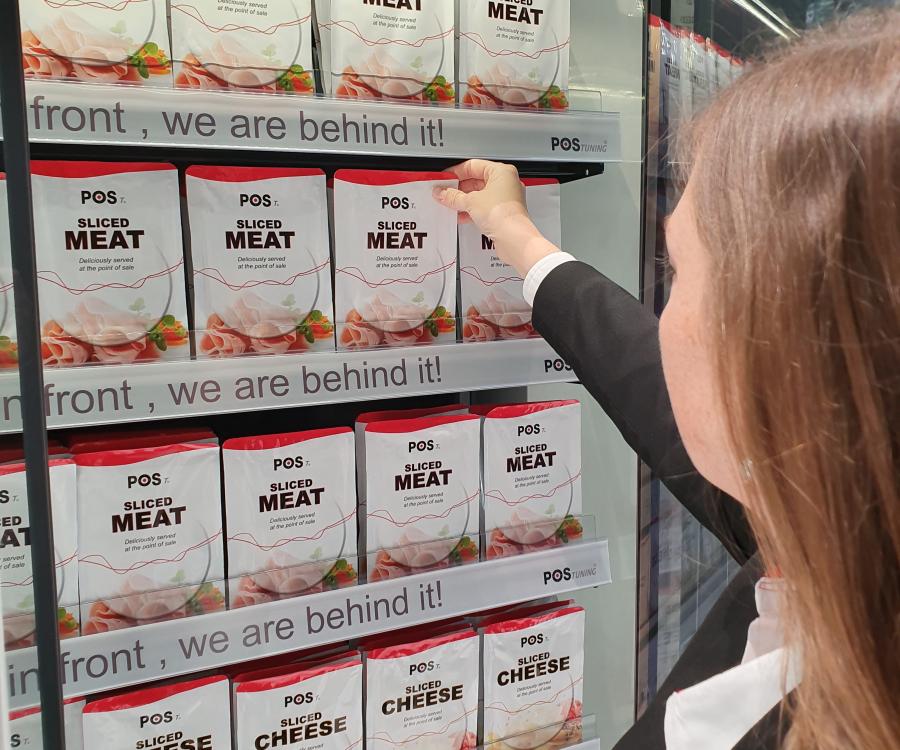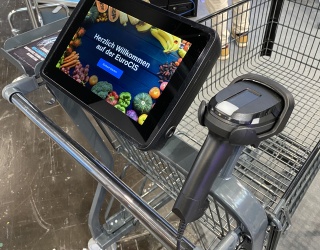
AutoZone, the number one auto parts retailer in the U.S., implements Reflexis to improve its merchandising planning processes and drive consistent store-level execution.
AutoZone is the leading retailer and a leading distributor of automotive replacement parts and accessories in the United States. Each store carries an extensive product line for cars, sport utility vehicles, vans, and light trucks, including new and remanufactured automotive hard parts, maintenance items, accessories, and non-automotive products.
Many stores also have a commercial sales program that provides commercial credit and prompt delivery of parts and other products to local, regional, and national repair garages, dealers, and service stations. AutoZone also sells the ALLDATA brand diagnostic and repair software. On the web, AutoZone sells diagnostic and repair information, and
auto and light truck parts through www.autozone.com.
Since opening its first store in Forrest City, Ark. on July 4, 1979, the company has joined the New York Stock Exchange (NYSE: AZO) and earned a spot in the Fortune 500. As of May 2009, AutoZone had more than 4,100 stores in 48 states, the District of Columbia and Puerto Rico in the U.S., and more than 100 stores in Mexico. The company was ranked number 148 in the 2009 “Global Powers of Retailing” list released by Deloitte and Touche of the top 250 retailers in the world and generated $6.1 billion in fiscal 2007 retail sales.
Customers always come first
Throughout its history, AutoZone has fostered a culture of putting its customers first. “We’re focused on customer service. It’s something we like to put at the forefront,” says Kevin Melton, director of planogram processes and customer satisfaction for AutoZone. “Every single person in our company has customer satisfaction in their title.” For AutoZone, providing great customer service includes having store employees who know the company’s products and parts, having great looking stores, and offering the best merchandise at the right price.
New merchandising strategy
As AutoZone grew, the company found it increasingly challenging to plan and execute its merchandising strategy. Due to its presence in multiple geographies, AutoZone has to factor in multiple climates, state and local laws, product availability, customer preference, vehicle popularity, store sizes and layouts, and more. Furthermore, some of the products were tied to various seasonal factors, which could vary by geography. “The demand for air conditioning for example in Puerto Rico is much more consistent than it is in Wisconsin,” says Melton. “We don’t sell a lot of air conditioning during the winter in Wisconsin.”
In his role, Melton is responsible for coordinating the activities of numerous different people, including category managers and planogram drawers, and ensuring category reviews are done on a timely basis, as well as putting the right processes in place.
Previous tools were not effective enough
AutoZone used a number of tools, including email and Excel spreadsheets, and had regular status meetings to track progress and ensure deadlines were being met. “We’ve got about 400 different events that we push product out to the stores on an annual basis,” he noted. “That’s a lot of different refreshes that we do to make sure we get the right product in the stores. In all these different steps that we go through, the category review or category management process, you’re looking at a process that can easily be documented down to 100 steps or more, depending on how granular you want to look at it. And that covers about a six-month average from start to finish in the planning cycle. There’s a lot of effort that goes into getting the right products into the stores. And from a cross functional perspective, this touches almost every functional area in the organization, whether it is merchandising, finance, supply chain, marketing, and store operations. It covers almost everyone.”
As AutoZone expanded, category reviews became increasingly time consuming and complex to manage. Furthermore, email and spreadsheet applications didn’t provide real-time status visibility nor could they capture and store best practices in a centralized repository. “As soon as I would update a spreadsheet and hit the print button to take a stack of copies to a meeting to sit down and talk about statuses, since it is a snap shot in time, before that printer stops printing, it is probably outdated. Most likely, somewhere, some status has changed,” Melton, said. This hindered the ability of management to identify problems and opportunities and take proactive action.
TaskManager enables view of real-time status changes
To solve these problems, AutoZone turned to Reflexis. The retailer had already implemented Reflexis Task Manager to ensure consistent execution of promotions, new product launches, and other events in its stores. Could Reflexis help AutoZone in its merchandising (category review) as well? The answer was yes. The retailer implemented Reflexis Merchandising Process Manager and gained the following benefits:
- Real-time visibility into Key Performance Indicators (KPIs) and changes in status
- Ability to manage by exception and respond proactively to problems and opportunities
- Increased efficiency in the planning and execution of merchandising initiatives
- Standardization and use of best practices in merchandising activities
- Integration with Task Management to ensure consistent store-level merchandising execution
“Now we’re able to create various templates that we can launch,” said Melton. “We can take it from a template level to a project, and we can launch these projects that are specific to the category review or to the merchandise that we’re trying to get out to the stores. That allows the various stakeholders and the various task owners that are involved in that project to go update their own information. Cross functionally, everybody that’s involved has one common repository of that knowledge or of that status update to know where we’re at and what we’re doing. Reflexis allows us to have real-time status updates so that every time anyone logs in and looks at the status of a project, you get real-time data and real-time updates of where you’re at with any particular project.”
Another advantage is that Melton can spend more time as a coach to improve the performance of his peers. “I can then go in and see for example if we’ve got something in our template that says something should take 2 weeks, but I see historically see that it takes us 3 weeks to accomplish, I can go into it to adjust it. It gives us the ability to not only manage and understand where we are but it also gives us a tool to improve our processes.”
Once a project has completed the planning stage and is ready to be launched to the stores, AutoZone can monitor it in Reflexis Task Manager. “This allows the Task Manager to give you the real time insight on whether or not the stores have indeed executed that project. We can also gain feedback from the stores on how the project went, and whether or not there are things we can do to improve the process the next time.”









